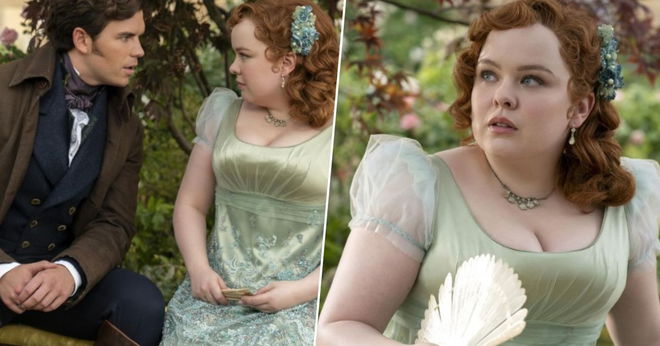Bridgerton Season 3 Part 1 finally dropped last week; if you're a fan of the books, you might have noticed a big difference in Penelope's storyline in the Netflix Series. This season, adapted from Julia Quinn’s beloved series, focuses on the fourth book, Romancing Mr. Bridgerton.
While adaptations often introduce changes, Bridgerton Season 3 has made a particularly striking one that enhances the story meaningfully.
Spoilers ahead for the first four episodes of Bridgerton Season 3!
Major Story Arc Removed in Bridgerton Season 3

The third season of Bridgerton, featuring Nicola Coughlan and Luke Newton as co-leads, finally grants Lady Whistledown herself, Penelope Featherington, a chance at love. However, unlike the book it was based on, the showrunners have decided to omit a problematic plotline concerning Penelope’s weight.
In Romancing Mister Bridgerton, Penelope is frequently described as "round" and "plump," which isn’t inherently an issue — until she loses 13 kilos.
Related: 7 Best Bridgerton Glow-Ups, including Season 3's Penelope and Colin

The book delves into her internal thoughts, making it clear that her body and self-perception are entangled in harmful stereotypes, suggesting that women must not be fat — or need to lose weight — to be deserving of love. Penelope’s body becomes a subject of ridicule, reinforcing outdated notions about larger bodies.
"Penelope's outer appearance has nothing to do with her story," the new Bridgerton showrunner Jess Brownell tells Refinery29 Australia. “Her story is absolutely about her internal journey — that's what matters."
Bridgerton Says No to Fatphobia

Julia Quinn’s Romancing Mister Bridgerton was published in 2002, at a time when the media often depicted fat characters as becoming beautiful only after losing weight. Bridgerton Season 3 acknowledges and modernises this outdated narrative, emphasising Penelope’s internal growth rather than her physical transformation.
By eliminating the weight loss plotline, Bridgerton Season 3 sends a powerful message: Love and self-worth are not contingent on one’s appearance.
Related: Was Lord Debling in the Books? New Bridgerton Character Might Not Be Fully Canon
In the world of Bridgerton, where romance and intrigue intertwine, Penelope Featherington’s love story stands out for its charm and progressive approach to themes of body image and representation.
Bridgerton Season 3: Celebrating Diversity and Representation

Bridgerton has always championed diversity and representation, and this season continues to push boundaries, giving curvier women a chance to see themselves as love interests on screen.
Every season begins with the young women of the ton making their debut in the marriage market by being presented to Queen Charlotte. This season, viewers met Dolores Stowell, played by Kitty Devlin. After her introduction to the queen, she communicates with her mother in British Sign Language.
Related: Will There Be More Bridgerton Spin-offs?
Fans were also introduced to Lord Remington, a charming young man who uses a wheelchair. His potential as a suitor for Penelope Featherington adds another layer of inclusivity to the narrative. Bridgerton's portrayal of differently-abled characters in dignified and romantic roles marks a significant step forward in on-screen representation.
Bridgerton Season 3 Part 2

As fans eagerly await the release of Bridgerton Season 3 Part 2, they can rewatch the love bloom for Penelope and Colin's friends-to-lovers relationship.
With its thoughtful adjustments and commitment to diversity, this season has set a new standard for adaptations, proving that changes to source material can enhance a story’s relevance and impact.
Bridgerton Season 3 Part 2 premiers on Netflix on June 13, 2024.

